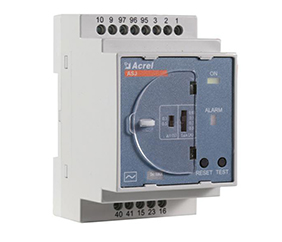

In recent years, with the continuous development of the power industry and the advancement of technology, wireless energy meter, as a new type of electric energy measurement device, have gradually attracted people's attention.
Wireless Energy Meter is an advanced electric energy measurement device that integrates electric energy measurement, data collection, remote communication, and monitoring functions. Compared with traditional meters, wireless energy meter has the following significant characteristics:
Remote communication function: Wireless Energy Meter uses wireless communication technology to achieve real-time connection with the distribution network, enabling remote transmission of electricity data and reception of instructions.
Data collection and analysis: Wireless Energy Meter can accurately and efficiently collect user electricity data. Through data analysis algorithms, they perform professional data processing, providing users with detailed electricity information.
Real-time monitoring and control: Wireless Energy Meter can monitor users' electricity usage in real-time and use remote control functions to adjust users' electricity behaviors, achieving smart electricity management.
Diversified applications: Wireless Energy Meter can be used in different scenarios, including households, commercial buildings, and industrial plants, meeting the electricity needs of different users.
Wireless Energy Meter has a wide range of applications in the power industry, including but not limited to the following aspects:
Power suppliers: Power suppliers can use wireless energy meter to achieve remote meter reading, manage users' electricity behaviors, and dynamically adjust electricity prices, improving electricity efficiency and energy-saving.
User end: Users can monitor and manage their electricity usage in real-time through wireless energy meter. By analyzing the data, they can understand their electricity habits and adjust their electricity behaviors to reduce electricity costs.
Government regulation: The government can use wireless energy meter to monitor the electricity usage of the entire market, accurately collect electricity information, timely adjust electricity policies, and ensure the stable operation of the electricity market.
Compared with traditional meters, wireless energy meter have multiple advantages, mainly reflected in the following aspects:
Energy saving and emission reduction: Wireless Energy Meter can help users accurately understand their electricity usage, optimize their electricity behaviors, and achieve the goal of energy-saving and emission reduction.
Cost reduction: Through functions such as remote meter reading and automated management, Wireless Energy Meter can reduce labor and material costs, improving the efficiency of the power industry.
Improving service quality: Wireless Energy Meter can achieve real-time monitoring and feedback of users' electricity data, providing more accurate services to power suppliers.
In the future, wireless energy meter will continue to advance in the following directions:
Higher degree of intelligence: Wireless Energy Meter will continuously improve their own intelligence level, incorporating more advanced technologies to achieve more refined electricity management.
Diversified data analysis: Wireless Energy Meter will enhance their data collection and analysis capabilities to provide users with more comprehensive and useful electricity information, meeting different needs.
Integration with the energy internet: Wireless Energy Meter will integrate deeply with the energy internet to achieve a dynamic balance of electricity supply and demand, and promote the widespread use of clean energy.
Wireless Energy Meter as an important technological innovation in the power industry, will undoubtedly play an increasingly important role in the future. They can not only improve the efficiency of the power industry but also provide users with more personalized and efficient electricity management solutions. We look forward to the continuous innovation of wireless energy meter in the future, expanding application fields, and contributing to the sustainable development of the power industry.
 English
English 日本語
日本語 한국어
한국어 français
français Deutsch
Deutsch Español
Español italiano
italiano русский
русский português
português tiếng việt
tiếng việt Türkçe
Türkçe العربية
العربية





